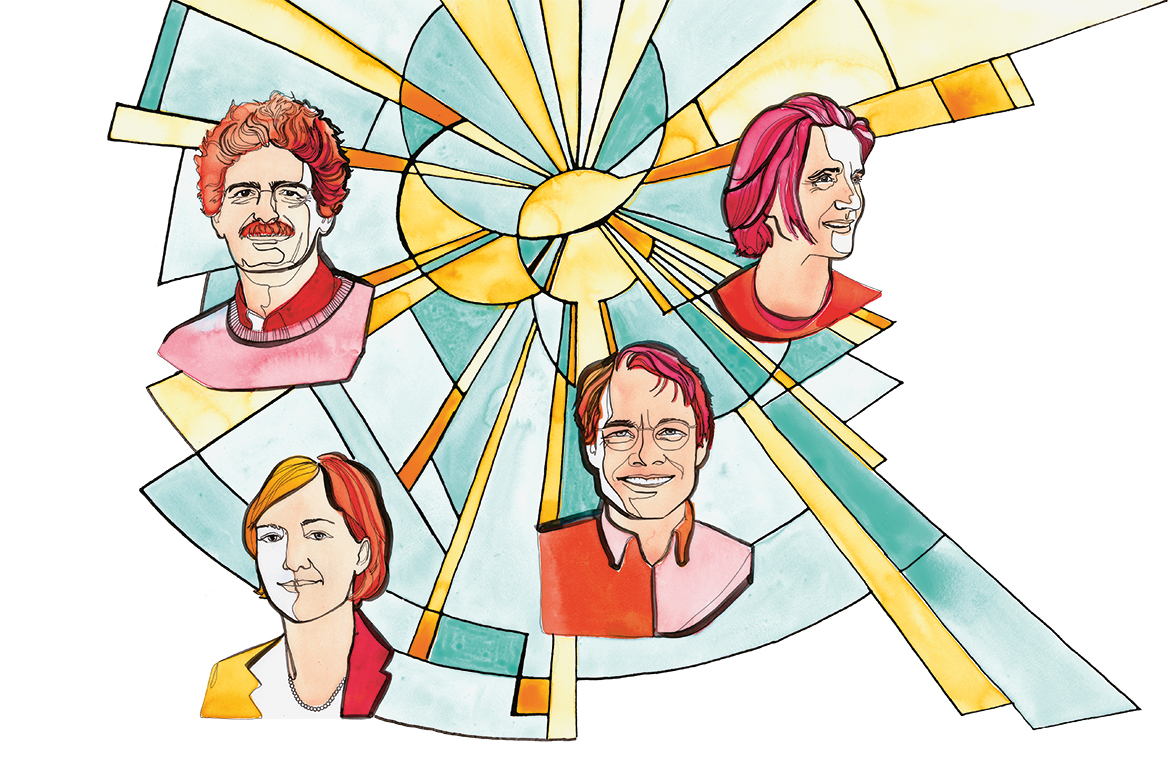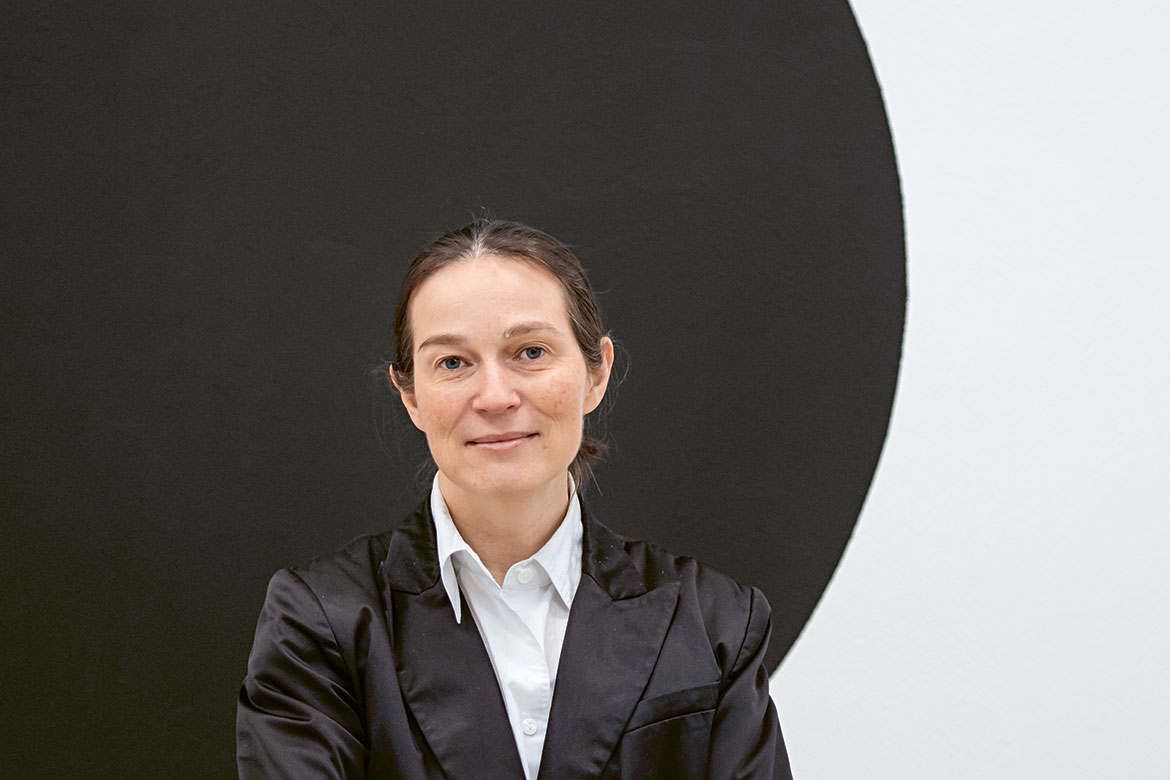Biblical beasts
Apart from the Bible, no other ancient text has been more often translated than the Physiologus. It brings together the animal symbolism of the Old Testament and early interpretations of nature, and it has exerted a major influence on Christian symbolism.
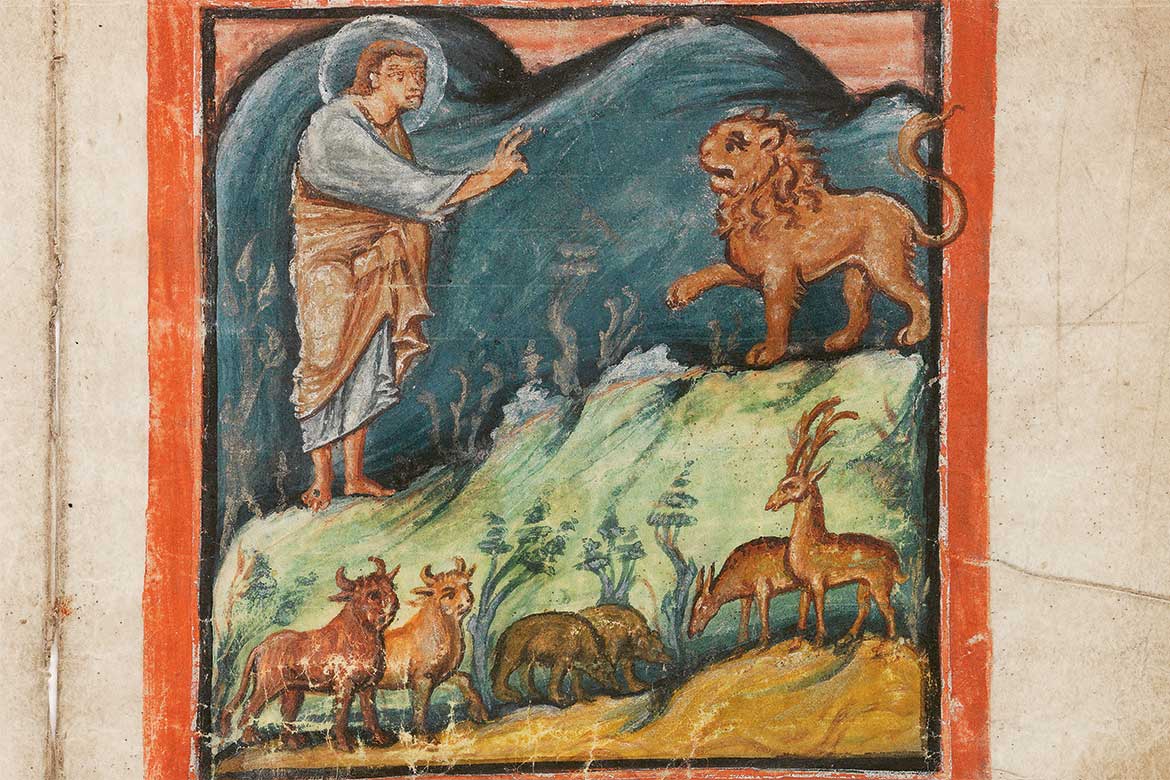
This manuscript was made in Rheims in around 830 and is held today by the Burgerbibliothek Bern | Image: Bern, Burgerbibliothek, Cod. 318, f. 19v – Physiologus Bernensis
The lion
The Physiologus begins with the king of the animals. Already in ancient Egypt and Assyria, the lion symbolised the power of kings and goddesses. In the Old Testament it was used to represent the coming Messiah (Genesis 49:9). The Physiologus sees him as Christ, uniting ancient animal lore with the symbolism of the Old Testament. The lion is initially born dead, but is awakened to life by its father after three days – like Christ emerging from His grave after the Crucifixion. The lion wipes away his tracks with his tail, just as Christ hid His divinity by becoming flesh.
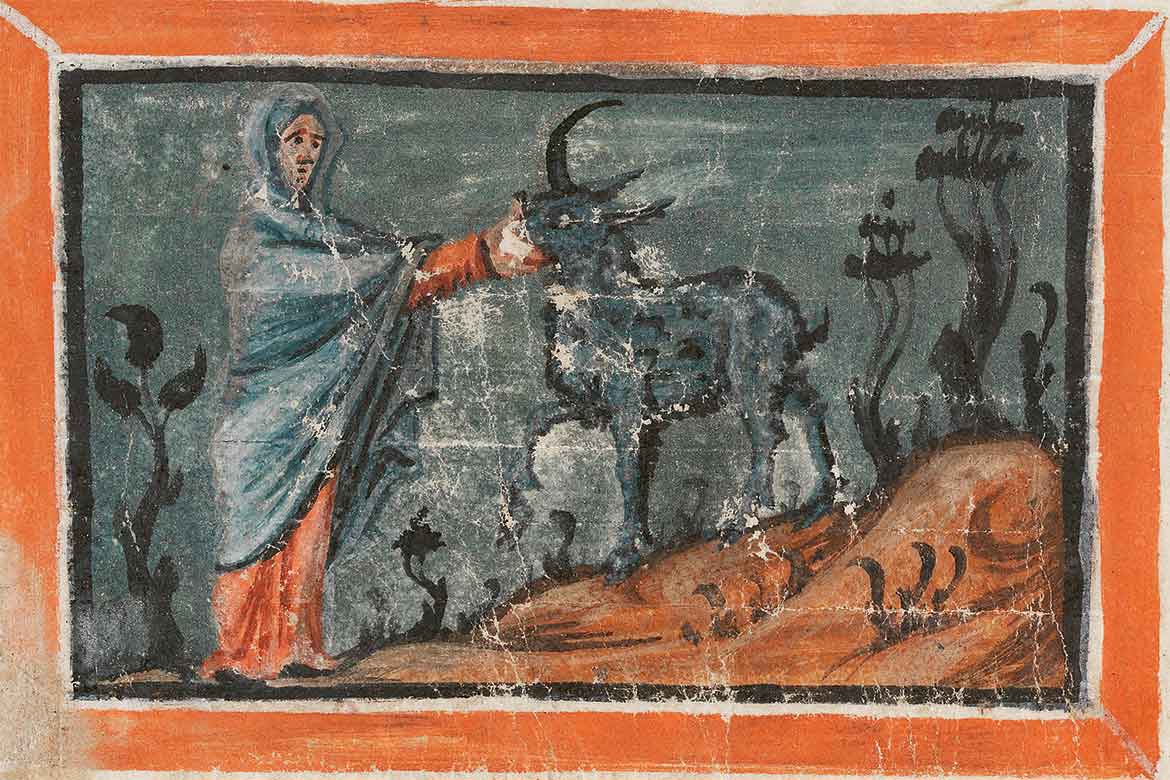
Image: Bern, Burgerbibliothek, Cod. 318, f. 19v – Physiologus Bernensis
The unicorn
The unicorn is a mythical creature and is familiar to many of us from a Disney movie. But it’s also an animal from the Bible. Just like the sirens and the centaurs, it’s found not in the Hebrew Bible but in its Greek translation, the Septuagint. At the time of the New Testament, the Septuagint was well known to Jews and Christians alike, and the Physiologus refers to it. Originally, the unicorn that appears in Psalm 22, verse 21, was a mighty, dangerous animal. According to legend, it can only be caught by a virgin, and we find this belief depicted in much of early mediaeval art. Its origins lie in Christology, the theology of Christ. Here, the unicorn, captured by the Virgin, is a metaphor for the conception of Christ in the Virgin Mary. Because it has been mastered by the Virgin, Christology depicts the unicorn as small and sweet-natured.
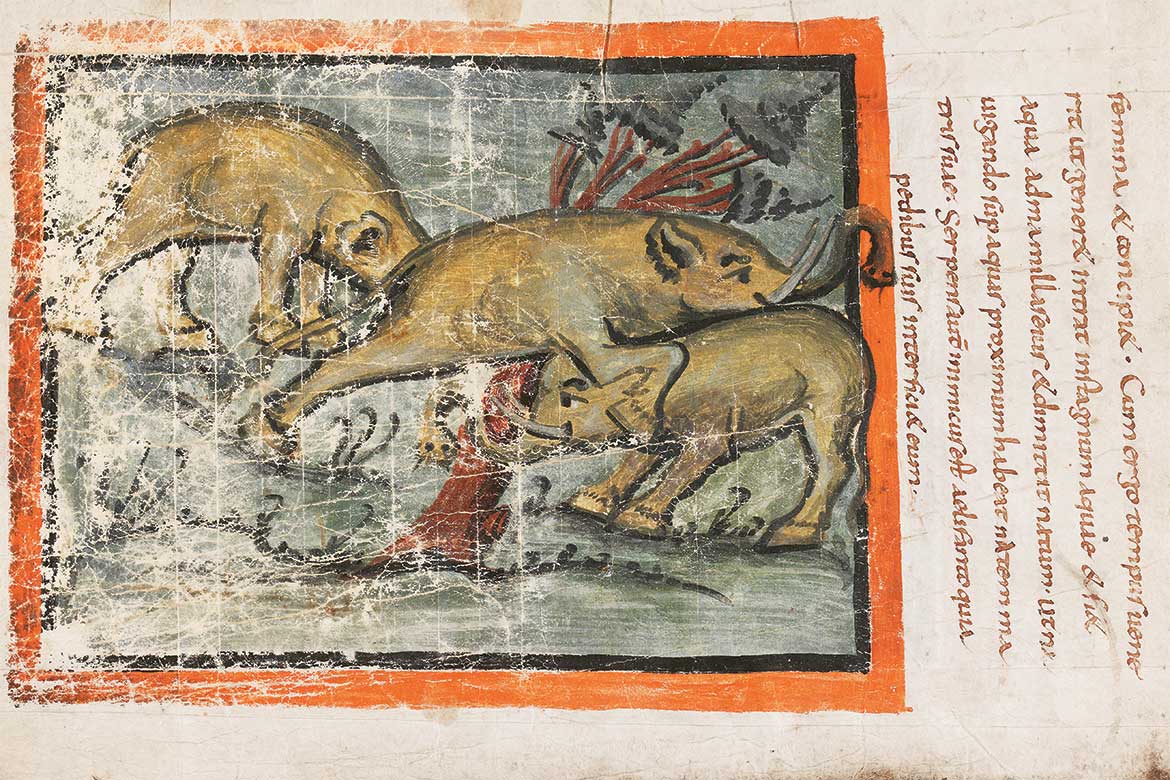
Image: Bern, Burgerbibliothek, Cod. 318, f. 19v – Physiologus Bernensis
The elephant
Aristoteles wrote in his ‘Historia animalium’ of how elephants sleep standing up, because if they lie down, they won’t be able to get up again. It was entirely spurious, of course, but the illustration in the Bern copy of the Physiologus links up with this idea by actually describing something we can observe in nature: elephants help others of their kind when they’ve fallen down. The Physiologus combines this observation with an allegory from the Old Testament. It describes the Fall of Adam and Eve – here an elephant couple – who lived in Paradise until they ate of the forbidden fruit. The text then tells of the futile efforts of the other elephants – Moses and the Prophets – to help fallen humanity get up again. Only the last elephant (Christ) is able to help the fallen elephant (Adam) to his feet. The behaviour of the elephants is here a reflection of the history of mankind as interpreted through Christian doctrine.
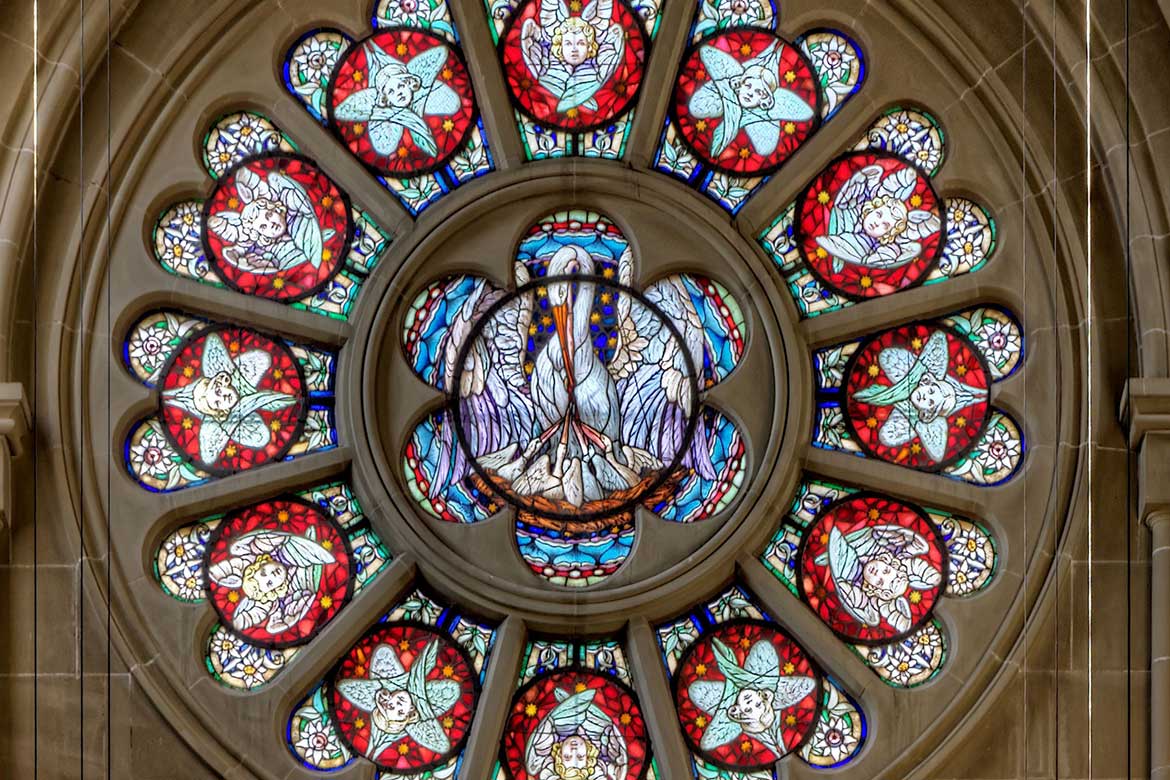
The Swiss Old Catholic Church of Saints Peter and Paul in Bern (© 2011 Peter Feenstra)
The pelican
We find the image of the pelican tearing open its breast to feed its young with drops of its own blood in cathedrals, universities and town halls, on the flag of the US State of Louisiana, and in the coat of arms of the town of Luckenwalde in the German state of Brandenburg. In the Physiologus, the pelican illustrates the history of man’s guilt and propitiation. Troubled by the cries of its children, so the Physiologus tells us, the pelican kills them – just as God obliterated the world in the Flood – but then it takes pity on them and awakens them to new life by letting its own blood drip onto them. The theological interpretation of this metaphor was forgotten by the end of the Middle Ages. Here, the open breast of the pelican symbolises Christ’s open side on the Cross, and the blood stands for the sacrament of the Eucharist that promises eternal life.
Pascale Hofmeier is a science editor at the SNSF.


